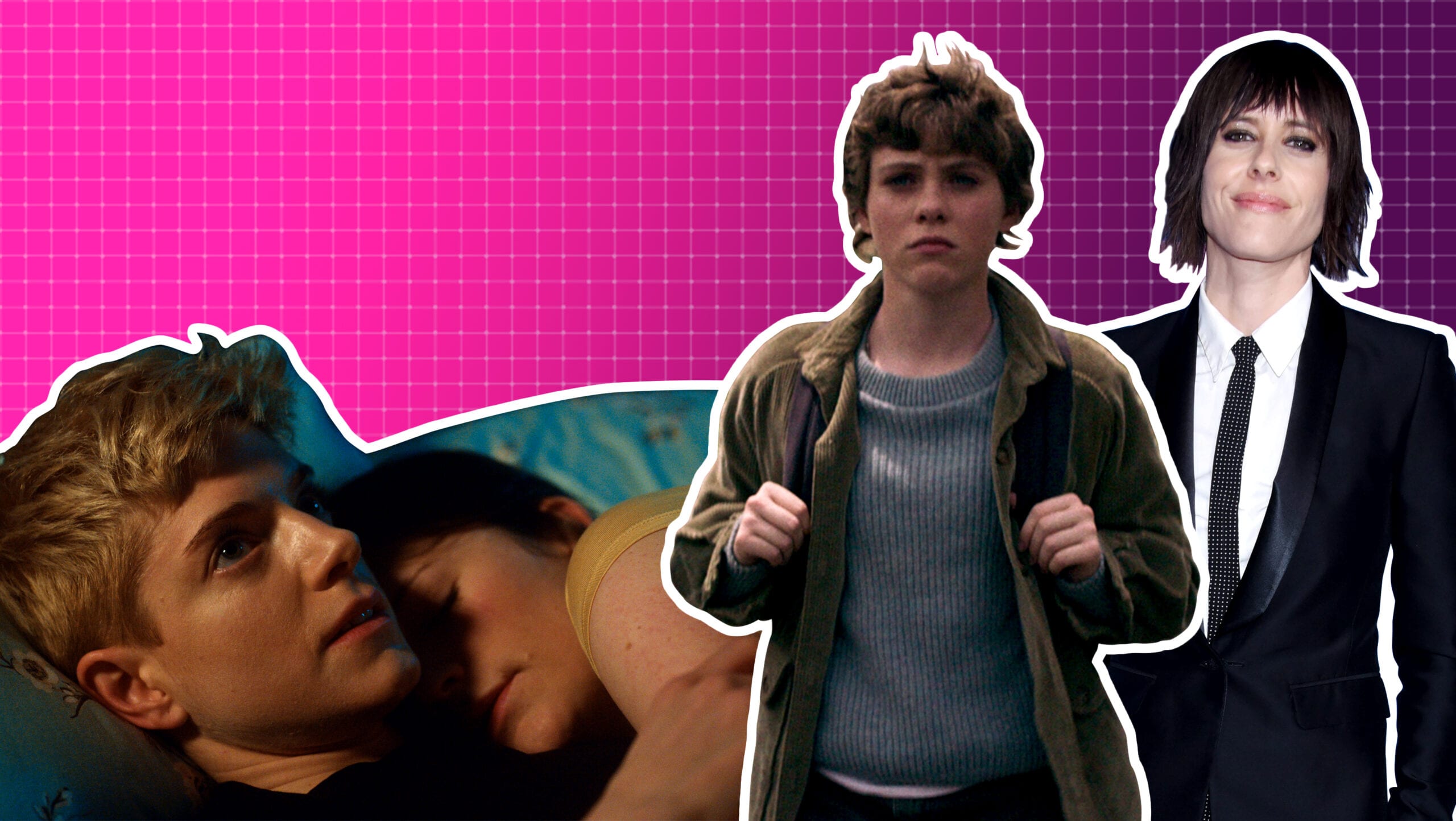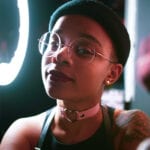After a decade of waiting, the first season of The L Word: Generation Q has come and gone, and we finally caught up with the lives of our favourite TV lesbians since they disappeared in 2009. Great news: They are all, for the most part, thriving. Take, for instance, Alice Pieszecki, the show’s fun-loving social butterfly—she hosted literal celebrity Roxane Gay (!) on her talk show! She basically became Ellen!
Many considered it a representation win. Because if The L Word: Generation Q is any proof, lesbian TV is finally having a moment. And for once, lesbians aren’t dying or murdering each other. When it came to occupational variety and lifestyles, Generation Q showed lesbians on the small screen in 2019 could really have had it all.
During the airing of the reboot, I thoroughly enjoyed watching and critiquing The L Word on Twitter with my followers and friends. I felt the camaraderie with other lesbians and queer women that came with dissecting the actions of every character and wardrobe choice.
But something still wasn’t right. While I desperately wanted to enjoy the show as an adult and push away my politics for a short time, I knew it was impossible. None of the leading cast members were darker than a paper bag. And as for those brief peeks at real women of colour? Not so great: In the aforementioned scene with Roxane Gay, Alice manages to steal the spotlight completely, rekindling her partnership with Nat in the middle of filming, leaving Gay to sit awkwardly while the couple sorted things out.
A lack of racial diversity on screen isn’t unique to The L Word: Generation Q. Shows like Batwoman and Gentleman Jack—all recently debuted, and all critically acclaimed—prove that lesbian media remains comfortable in its whiteness, and there’s a reluctance to fix it.
It doesn’t seem to be getting any better. There has been an uptick in queer storytelling on screen, according to GLAAD’s 2019 TV diversity report. But it comes with a caveat: “Racial diversity of LGBTQ characters increased on broadcast and cable, but decreased on streaming originals,” the report reads.
So I shouldn’t have been surprised when, in late February, I saw a story describing the new lesbian Netflix drama Feel Good as a “must-watch” show. It gave me pause: The image attached to the story showed two white women in a tender embrace. It didn’t look like a “must-watch” to me. It looked like everything I’ve already ever seen.
Feel Good was written, created and stars Mae Martin as Mae, a comedian and recovering addict dating a formerly straight woman. I watched the trailer to see if that would shed some insight into why this show is a “must-watch.” I saw a seemingly upper-middle-class white lesbian with a Kristen Stewart bleached buzzcut and chaotic Shane McCutcheon energy stumble across my screen. I could not relate. I would have wanted to see someone I would realistically hang out with—perhaps a masculine Black lesbian messily navigating the dating scene. But all the comments on Facebook and Instagram posts were clamouring for more info. Even Netflix’s official queer Instagram page patted itself on the back for having “a dark comedy written, created by and starring a queer person (who plays a queer person!!) and Lisa Kudrow is her mom!?! I’m all in, @hooraymae.”
“Lesbian media remains comfortable in its whiteness, and there’s a reluctance to fix it”
This wasn’t the first time I’d seen celebratory hot takes about the lesbian narrative: A few weeks ago, while watching Oscar-nominated animated films at an arthouse cinema, I saw a trailer for the period drama Portrait of a Lady on Fire that was released in select cinemas in December. At Autostraddle, writer Drew Gregory wrote high praise that “Portrait of a Lady on Fire is not simply a work of the female gaze, it is not simply a work of lesbian cinema. It is pushing against the boundaries of the screen, frantically, lovingly, desperately, erotically, grasping grasping grasping for a new language, a new way of seeing.” There was no interrogation or even light prodding into a period drama that sounds like the 18th-century version of Carol. I’m left questioning why only white women get their same-gender loving stories on the big and small screens and the rest of us have to try to see ourselves in that narrative or wait until a lone indie film with Black characters or characters of colour comes out once a decade.
The trailer for another recent Netflix show, I Am Not Okay With This, introduces its main character Sydney, a lesbian, with her telling the audience she’s a “boring, 17-year-old white girl. I’m not special.” And yet the white lesbian narrative is being given special treatment at Netflix’s studios and elsewhere. Sydney’s dialogue feels like a wink and nudge from show writers confirming that they hear what we’re saying and yet don’t care enough to make a Black or brown lesbian anything other than a supporting character.
One show that has given space to lesbians of colour, featuring the experiences of a Black lesbian (and a masculine one at that!), is Lena Waithe’s new series Twenties. I watched the pilot, which first aired on BET earlier this month, and though it felt strikingly similar to Feel Good, it gave me what the latter lacked: a portrayal of working-class writer Hattie with all the mess that comes with being in your early 20s. That said, Waithe obviously can’t—and shouldn’t—carry the weight of Black queer women’s TV on her own. She has one narrative that’s hers entirely, and Black lesbians and queer women have multiple stories that need to be told from different perspectives.
In the meantime, queer white writers who could support the generation of new and diverse lesbian media aren’t tackling this issue. Again at Autostraddle, co-founder Riese Bernard only briefly mentions Sydney’s whiteness in her thoughts on I Am Not Okay With This before swiftly moving on to unpack how she resonates with the character. At The Independent, writer Alexandra Pollard doesn’t mention Syd’s whiteness at all. This doesn’t surprise me, nor does it make me feel any way besides tired. Why aren’t white lesbians checking each other about this issue before I’m commissioned to do it?
“I’m tired of lesbian media being overwhelmingly white and I’m tired of feeling like I have to dutifully watch it in order to keep up with what’s going on in the culture”
Last year I wrote about how “mainstream” white lesbianism is not every lesbians’ mainstream. “Whiteness has always been the default face of everything, even marginalized sexual identities,” I wrote in Flare—and that sentiment still holds true. Persistently, the same narrative of whiteness as the default has held steady because white people passively uphold it. It isn’t my job to be the angry Black lesbian shouting into the void about how important it is to bring different perspectives into the room. I don’t want to be perpetually irritated at the failings of white lesbians. I don’t want Black and brown lesbians to have to hand-hold white lesbians into recognizing that our stories and the work we’ve been doing are dope on their own, and I won’t advocate for us begging to get a seat at the table.
For now, I’ve been clinging to Wanuri Kahiu’s stellar 2018 lesbian coming of age film Rafiki. I’d like to see more works of art like it that centre sapphic love in the African diaspora. But the truth is that I’ll still be watching Portrait of a Lady on Fire and Feel Good and I Am Not Okay With This because I feel like I have to—there’s still so little lesbian representation out there.
I’m tired of lesbian media being overwhelmingly white and I’m tired of feeling like I have to dutifully watch it in order to keep up with what’s going on in the culture. I’m beyond annoyed by the same stories being repackaged and fed to us with the expectation that we’ll be grateful for whatever representation comes our way.
We see what’s happening and deserve better.


 Why you can trust Xtra
Why you can trust Xtra


